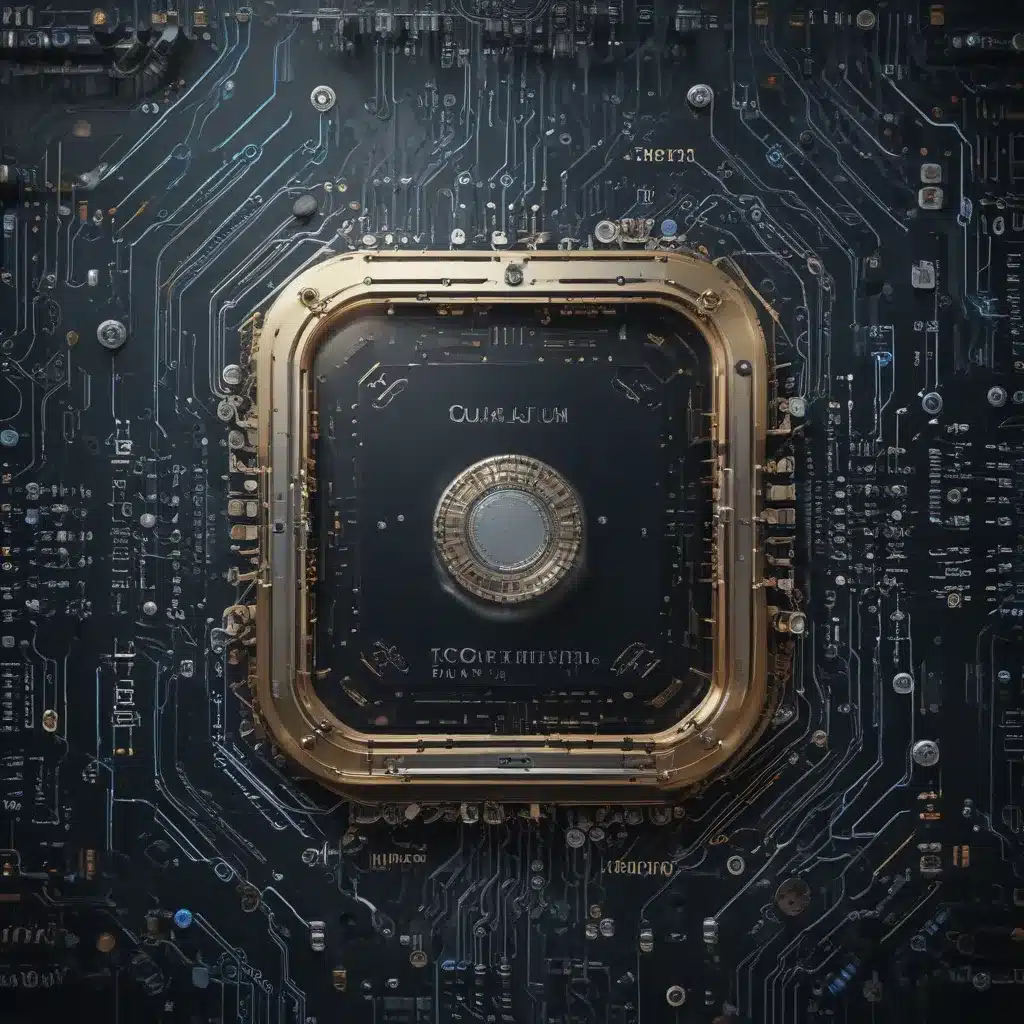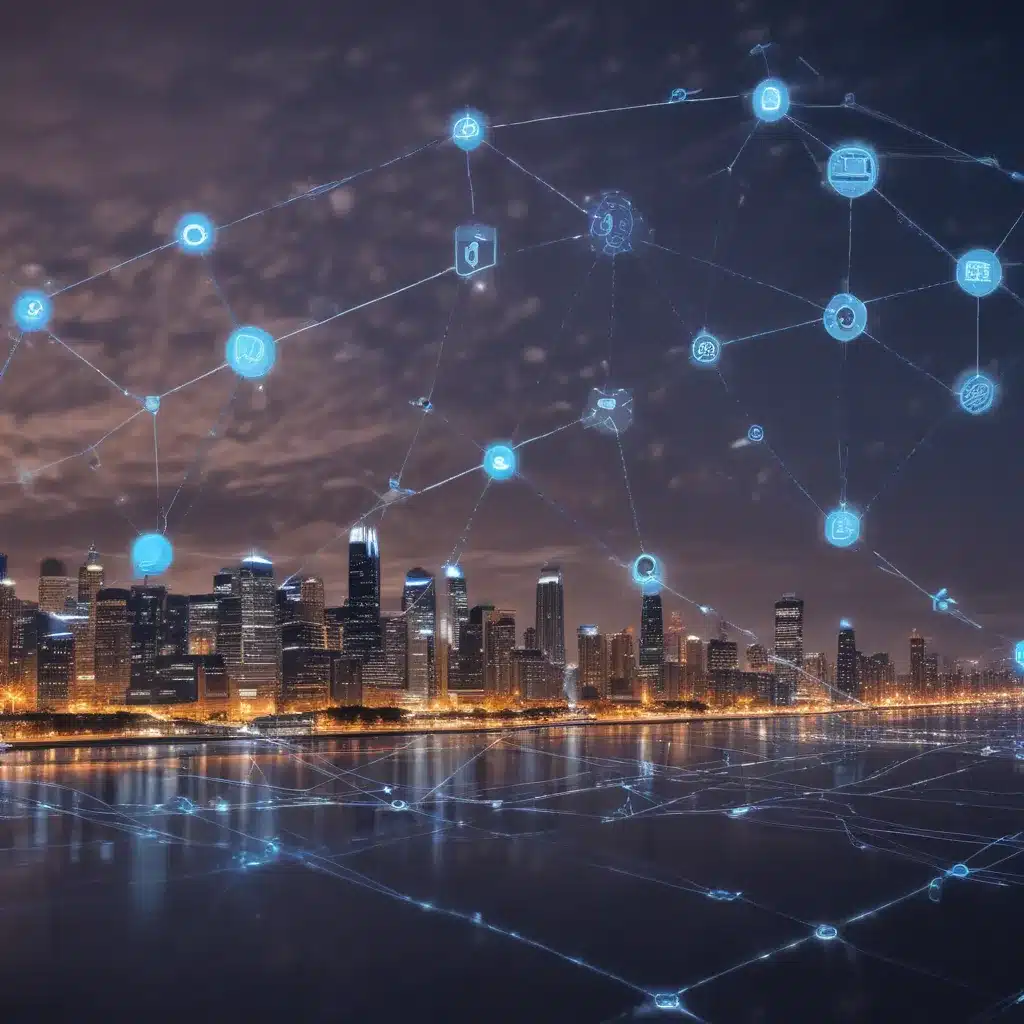Malware has become an increasingly prevalent issue in the digital age. As technology advances, malware creators have become more sophisticated in their ability to create malicious code that can take advantage of unsuspecting victims. This article will explore the ethical implications of malware creation and its societal impacts.
The history of malware stretches back to the early days of computing when hackers sought ways to gain unauthorized access to computer systems. This trend has grown exponentially as cyber criminals have found new and creative ways to exploit computer systems and network vulnerabilities. The underlying ethical issues associated with creating malicious software are complex and far-reaching and must be carefully considered by any individual or organization engaged in this activity.
Moreover, the consequences of malware creation can be severe for individuals and organizations. Malicious code can cause significant financial damage through data theft or destruction, not to mention the potential for long-term reputational harm if a company’s reputation is tarnished due to a successful attack. Therefore, society must take the ethical implications of malware creation seriously and work together to ensure that appropriate measures are taken to mitigate the risks posed by malicious code.

Definition Of Malware
Malware is a term used to describe malicious software, which is computer code specifically designed to cause harm or damage. It is created for various reasons, including sabotage, theft, and espionage. Malware can steal data from computers, alter system files, and even replicate itself across networks. Furthermore, malware can be spread through email attachments, downloads from the internet, or directly inserted into a computer via a USB drive.
The ethical implications of malware creation are becoming increasingly important in today’s digital world. While it can be argued that some forms of malware can have legitimate uses, such as testing computer security systems, most malicious software is created to cause harm and disrupt the normal functioning of computers and networks. This has severe consequences for society as a whole, as it affects not only individuals but entire organizations and communities that rely on secure digital systems.
The use of malware also raises questions about the morality of those who create it. In addition to causing immense damage to those affected, creating malicious software can lead to legal repercussions for the perpetrators if caught. It may also undermine public trust in companies and organizations that use technology for their day-to-day operations if they fail to protect against such attacks. Ultimately, creating malware carries significant risks for its creators and potential victims.
Types Of Malware
Malware comes in various forms, each with its purpose and potential consequences. Some of the most common types of malicious software include viruses, worms, Trojans, ransomware, spyware, and adware. Each type of malware is designed to perform specific tasks that may range from stealing data to hijacking computers for malicious purposes.
Viruses are one of the most notorious types of malware. They are typically spread through downloads or email attachments and are designed to replicate themselves on other computers. Once a virus has infected a computer, it can cause severe damage by deleting files or corrupting system programs. Furthermore, some viruses have been known to steal sensitive information such as passwords and credit card numbers.
Worms are another type of malicious software that can spread quickly across networks without user intervention. Unlike viruses, worms don’t need any host file to replicate themselves; instead, they exploit security vulnerabilities to gain access and spread rapidly throughout networks. Worms can be used for destructive purposes, such as deleting files or disrupting services on compromised systems.
Trojans are particularly dangerous because they disguise themselves as legitimate programs or files to access a computer’s system resources. Once installed on a laptop, Trojans can open backdoors for attackers, allowing them to control the machine or even steal confidential data remotely. Ransomware is another form of malicious software that encrypts users’ data until they pay a ransom to unlock it; at the same time, spyware is designed to track users’ online activities and steal their personal information without their knowledge or consent. Adware can also be used to display intrusive advertisements on websites or applications without the user’s prior authorisation.
In sum, numerous forms of malware pose various levels of risk depending on their intended use and how they are deployed in the real world. While some malicious software can be used legitimately, its use carries significant ethical implications due to both its creators and its potential victims. Therefore, it is essential for everyone involved with technology — from developers and users alike — to understand the risks posed by malware so that proper precautions can be taken when dealing with digital systems and networks.
History Of Malware Creation
The history of malware creation is long and complex, with many twists and turns. It has evolved from a relatively harmless form of prank software to a sophisticated tool used for cybercrime and espionage. From the early days of computer viruses to modern-day ransomware attacks, malicious code has been used in various ways to cause harm and disruption.
To understand the evolution of malicious software, looking at the critical turning points in its history is helpful.
- The First Malicious Programs: Since 1949, computers have been targeted by malicious code. That year, mathematician John von Neumann wrote the first self-replicating program, designed to alter other programs without user authorization. Later in 1982, the first virus was released into the wild by Richard Skrenta. Known as Elk Cloner, this virus spread via floppy discs and was designed as a practical joke rather than an attempt at theft or sabotage.
- The Golden Age: In 1986, two brothers created Brain – one of the earliest computer worms – which spread rapidly through networks containing IBM PCs. Throughout the late 1980s and early 1990s, viruses became increasingly sophisticated as hackers sought new ways to exploit security vulnerabilities in operating systems such as Microsoft Windows. During this period, many malicious programs were developed, including Trojans, spyware and adware.
- Modern-Day Malware: By 2000, malware had become more widespread due to increased internet access and more powerful computing devices available to consumers. Today’s malicious programs are often highly sophisticated code designed for specific purposes, such as financial gain or data theft from companies and individuals. Ransomware is one example of this type of malware; attackers use it to encrypt victims’ files until they pay a ransom fee for their release.
Malware creation has come a long way since its inception nearly 70 years ago; however, its use still carries significant ethical implications for those who create it and those impacted by it. As such, organizations must remain vigilant when dealing with digital systems and networks to protect themselves from potential cyberattacks involving malicious software.
Legal Considerations
The legal implications of malware creation are complicated and far-reaching. In many countries, the creation and distribution of malicious software are illegal and can lead to severe criminal penalties. For instance, in the United States, the Computer Fraud and Abuse Act prohibits anyone from knowingly accessing a computer without authorization or exceeding authorized access. Under this law, creating and using malware could result in civil and criminal charges.
In addition to criminal penalties, those who create malware may be subject to civil lawsuits by victims who have suffered losses due to the malicious software. Such cases often involve allegations of negligence or breach of contract by the malware creator. If successful, these lawsuits may result in substantial financial damages for victims and may also provide a deterrent for future malicious software creators.
Given the potentially severe legal consequences of creating or distributing a malicious software, organizations must take steps to protect themselves from such activities. This may include implementing robust security protocols, regularly monitoring networks for suspicious activity, and promptly reporting incidents to law enforcement agencies when necessary. By taking proactive measures such as these, organizations can help mitigate potential risks associated with malware creation while also deterring potential criminals from engaging in such activities in the first place.
Social Implications
The creation and distribution of malicious software have many social implications. For example, the use of malware can lead to significant losses for affected organizations and economic harm to individuals who are victims of identity theft or other malicious activities. In addition, the spread of malware can lead to costly disruptions in services such as banking and telecommunications, which can have severe consequences for businesses and communities.
Moreover, malware creation and distribution may also hurt public trust in technology. As individuals become increasingly aware of the potential dangers of malicious software, they may become less willing to rely on technology for their everyday needs. This could lead to decreased innovation in the tech industry, which could hinder economic growth in certain areas.
Finally, the prevalence of malware may also have a detrimental effect on global security. Criminals and terrorists often use malicious software for illicit purposes; this can result in more significant risks for citizens worldwide. Additionally, it can be difficult for authorities to detect and prevent the spread of malicious software due to its often-elusive nature. As such, efforts must be taken to ensure that perpetrators are held accountable, and that appropriate levels of security are maintained at all times.
Security Implications
The security implications of malware creation and distribution are far-reaching. Despite the often sophisticated techniques employed by malicious actors, some steps can be taken to reduce the risk posed by malicious software. Here are a few tips for staying safe online:
• Make sure your computer is always up-to-date with the latest security patches and anti-virus software.
• Avoid clicking on links or downloading files from unfamiliar sources.
• Be cautious when providing personal information online, especially in response to unsolicited emails or messages.
• Use two-factor authentication whenever possible.
In addition to these basic precautions, organizations should ensure that their networks and systems are appropriately secured against potential threats. This includes regularly scanning for vulnerabilities, implementing strong access control measures, and monitoring suspicious activity. Organizations can help protect their data and customers from malicious actors by taking these proactive steps. Furthermore, it is essential to remember that no system is entirely secure; even the most advanced security measures may be bypassed by a determined attacker. For this reason, it is essential to remain vigilant and continually update security protocols as needed.
Economic Impact
The economic impacts of malware creation and distribution can be profound. Malicious software can cause financial losses to businesses, ranging from the theft of sensitive data or intellectual property to disruptions in operations due to system downtime. This can have a significant impact on a company’s bottom line, as well as on its reputation. Furthermore, malicious actors may also seek to exploit vulnerable systems for their financial gain through extortion or ransomware schemes.
In addition, the proliferation of malicious software has created an industry of cybersecurity experts specialising in defending against such threats. The demand for these services is high and often commands high prices. As a result, large companies are spending significant amounts of money on cyber security measures, which have had an economic impact directly and indirectly.
Finally, it is also essential to consider how malware affects individuals and society more broadly. The personal information frequently stolen by malicious actors can lead to identity theft and other forms of fraud. This can seriously affect victims’ finances, safety, and reputations. Additionally, malware creators often distribute their creations indiscriminately, meaning even innocent users may be affected by malicious software without their knowledge or consent.
Political Impact
Malware has also had a dramatic political impact in recent years. Much like a virus, it has spread rapidly and is becoming increasingly difficult to contain. Nation-states have used it to carry out cyber warfare operations and by criminals and nefarious actors for their financial gain. This ever-expanding threat landscape has forced governments worldwide to invest heavily in cyber security measures and resources to protect their critical infrastructure and sensitive data.
Moreover, malware has been used as a tool of censorship and oppression by authoritarian regimes seeking to control online freedom of expression and suppress dissent. In addition, malicious actors can use malware to manipulate public opinion or interfere with elections. As such, this malicious software represents a severe risk to democratic values and processes on both local and global scales.
The ethical implications of creating malware are clear: it can be used for malicious purposes that have far-reaching consequences for society. Therefore, individuals must engage in responsible behaviour when creating or using software – including malicious software – to ensure that technology is used ethically and responsibly.
Morality Debate
Given the potential for misuse, it is not surprising that there has been much debate surrounding the morality of creating and using malware. Some argue that such software can perform legitimate functions like security testing or fraud prevention. Others point out that malicious actors can also use malware for illegal or unethical activities, such as espionage or data theft.
Proponents of ethical hacking maintain that its potential benefits outweigh the risks associated with malware. They argue that, if used responsibly and following applicable laws and regulations, malware can be a valuable tool for businesses and organizations to protect themselves from cyber threats. Furthermore, they believe ethical hackers should use their skills responsibly to ensure cyber security and public safety.
On the other hand, opponents of malware creation contend that its risks outweigh any potential benefit. They argue that even if used responsibly, criminals or other malicious actors could still exploit malicious software for nefarious purposes. Therefore, they contend that individuals should refrain from creating or using such software to minimize the risk of exploitation. Ultimately, this remains a contentious moral debate with no clear consensus.
Cyber Crime And Terrorism
Malware has become a primary tool for cybercriminals, terrorists, and other malicious actors to steal data or disrupt services. Cybercrime is a significant concern in today’s increasingly interconnected society, with losses estimated at billions of dollars annually. Malware can also be used to spread propaganda or promote political agendas by infiltrating networks and stealing sensitive information. Terrorist organizations have used this technology to attack government agencies and private businesses, causing significant disruption and financial losses.
Furthermore, malware can launch distributed denial-of-service (DDoS) attacks designed to overwhelm servers with traffic and cause them to crash or become unresponsive. Malicious actors have employed such tactics to extort victims for money or prevent them from accessing certain websites or services. This malicious activity has become increasingly common in recent years, leading some governments and organizations to invest heavily in cyber security measures.
The prevalence of malware used for criminal activities highlights the need for greater vigilance regarding online security. Individuals must take steps such as regularly updating software and using strong passwords to protect themselves from potential threats. Governments must also take action by passing legislation that imposes stiff penalties on those who engage in such activities and invest resources into research and development of new technologies that can help detect and prevent malware attacks before they occur. By taking these proactive steps, society can reduce the impact of malware on our lives while still enjoying the benefits of an interconnected world.
Solutions To Combat Malware Creation
To effectively combat the threat of malware, a comprehensive approach is necessary. Governments must ensure that those who create or use malicious software are held accountable for their actions. This can be done through legislation imposing penalties on those guilty of engaging in such activities. Additionally, organizations should take proactive measures to protect themselves from potential threats by investing in cybersecurity solutions and regularly training their staff to detect and respond to suspicious activity.
At the same time, education is crucial in preventing the spread of malware. People should be aware of the risks associated with downloading unsolicited emails or visiting unknown websites, as these can contain malicious code that could cause significant disruption and financial loss. Furthermore, governments should invest resources into research and development of new technologies that can help protect networks from malicious actors while still allowing legitimate users access to services.
Finally, there needs to be greater international cooperation when acting against malicious actors in cyberspace. Countries must work together to share information about threats and collaborate on initiatives to stop cybercrime before it occurs. By taking these steps, countries can protect their citizens from the impacts of malware while still allowing them access to the benefits of an interconnected world.
Future Outlook
As technology evolves, the threat posed by malicious actors will only increase. To stay one step ahead of these threats, governments and organizations must continue to invest in measures that protect against the spread of malware. This includes legislation that holds those responsible for creating or using malicious software accountable for their actions and proactive steps taken by organizations to defend themselves from potential threats. Additionally, education is essential to ensure that people know the dangers they may face when interacting online.
International cooperation also plays an important role when it comes to tackling cybercrime. Countries must work together to share information and collaborate on initiatives to stop malicious actors before they can cause significant disruption or financial loss. Finally, there should be continued investment in research and development of new technologies that can help protect networks while still allowing legitimate users access to services.
Looking ahead, it is clear that governments and organizations must remain vigilant if they are to combat the growing threat posed by malware creators. By taking preventive measures such as legislation, security solutions, and training staff on how to detect suspicious activity, as well as investing in research and development of new technologies, countries can better protect their citizens from the impacts of malicious actors while still allowing them access to the benefits of an interconnected world.
Frequently Asked Questions
What Is The Most Effective Way To Protect Against Malware?
The proliferation of malware has become increasingly pressing in the digital world. Malware is defined as malicious software that disrupts computer systems steals data, and spies on users. As a result, organizations and individuals alike must take steps to protect themselves from this threat. The most effective way to protect against malware is through antivirus software, firewalls, and other cyber security measures.
Antivirus software is one of the most popular methods for protecting against malware. It scans for malicious programs regularly and identifies potential threats before they can cause damage. Additionally, it can be used to remove existing infections from a system if needed. Firewalls are another form of protection that helps prevent unauthorized access to networks or computers by blocking certain types of incoming traffic. Finally, regular backups ensure that critical data remains secure even if malicious files are detected and removed from a system.
These measures can go a long way in helping prevent malware attacks, but it’s also important to remember that user vigilance is critical in defending against malicious activity. This involves awareness of phishing emails, suspicious links or attachments sent via email or social media, and any other signs of suspicious activity online. Educating users about the risks associated with malware can help them identify potential threats to help protect their data and systems from harm.
Ultimately, the best defence against malware combines antivirus software, firewalls, regular backups and user education on cybersecurity best practices. By taking these steps, organizations and individuals can significantly reduce their risk when protecting their information from malicious actors online.
What Are The Potential Dangers Of Creating Malware?
The potential dangers of creating malware are numerous and far-reaching. Malware is a type of malicious software that can be used to cause harm or disrupt normal computer operations. It can access confidential information, steal data, or corrupt files. Additionally, it has the potential to spread rapidly across networks and even damage hardware if left unchecked.
Moreover, using malware may have significant legal implications for its creators. Depending on its purpose and intent, malware creation could potentially lead to criminal charges being brought against its creator. Furthermore, the reputation of any company associated with malware creation could suffer significantly due to public backlash and negative media coverage.
Finally, it is vital to consider the ethical implications of creating malware. The consequences of misusing technology are often far-reaching and can have lasting impacts on individuals and society. As such, those who engage in activities related to malware should ensure that they fully understand both the legal and ethical obligations associated with their actions before proceeding.
Are There Any Ethical Considerations When Creating Malware?
Creating malware involves a complex set of ethical considerations. Malware, or malicious software, is designed to disrupt or damage computer systems without the user’s knowledge or consent. It can be used for a variety of purposes, from theft of data to sabotage. Creating malware has become increasingly accessible and more sophisticated over time, raising questions about the ethics behind its development.
Several ethical dilemmas must be considered when creating malware. First, the intention behind creating malware should be examined; even if it is developed for legitimate security testing purposes, it could still be misused by someone with malicious intent. Additionally, there is an issue of privacy: many forms of malware can provide access to sensitive information that could be used for nefarious purposes. Furthermore, the potential consequences of creating malware must also be considered. At the same time, it may not have been intended to cause harm, but its creators might still be held liable if it is used in an unethical manner.
Finally, there are ethical implications related to the dissemination of malware. Spreading malicious code can make computers vulnerable to attack and enable criminals to gain access to sensitive information that could otherwise have been protected. Additionally, malware can cause economic disruption due to activities such as data theft or denial-of-service attacks on corporate networks. The ethics associated with developing and distributing this type of software should not be overlooked; these considerations will ultimately determine whether its use is beneficial or detrimental to society.
How Has Malware Changed Over The Years?
Since the dawn of computing, malware has been an ever-evolving nuisance. From its simple beginnings as a few lines of code designed to disrupt software programs to today’s sophisticated ransomware and spyware, malicious software has come a long way. This article will explore how malware has changed over the years and its implications on society.
Firstly, it is crucial to understand how malware works. Malware typically infiltrates computers via downloads or email attachments, allowing the attacker to gain access to information and control over the system. Over time, malware has become increasingly sophisticated in its delivery methods and its ability to spread quickly across networks. As technology advances, so too does the sophistication of malicious software.
Secondly, the impacts of malware have become more pronounced over time. Hackers continue developing new strains of powerful ransomware that can shut down entire networks simultaneously, so businesses are forced to take more extraordinary security measures to protect themselves from harm. In addition, personal data stored on computers is at an increased risk of theft or manipulation by malicious actors using malware attacks. Finally, as cybercrime continues to rise in prevalence and sophistication, government entities worldwide have begun implementing stricter regulations regarding computer security to protect citizens from potential harm caused by malicious software attacks.
These advancements in cybercrime have necessitated a dramatic shift in how people view their digital security and privacy rights. The development of effective countermeasures against malicious software is now essential for anyone who wants to maintain their digital safety and preserve their personal information online. From antivirus programs that can detect and delete malicious code before it can cause any damage to comprehensive user education programs that teach users how best to protect themselves online, it is clear that society must remain vigilant if we are going to combat this evolving threat posed by modern cybercriminals.
What Are The Legal Implications Of Using Malware?
Using malware—computer programs designed to disrupt, damage, or gain unauthorized access to a computer system—has become increasingly widespread in modern society. As the use of such malicious code has grown, so too have the legal implications surrounding its use and creation. This article will examine these implications, exploring four significant points: the reach of international laws, criminal penalties for misuse, civil liabilities for damages caused by malware and potential defences against prosecution.
International laws determine the legal jurisdiction for any illegal activity related to malware. These laws are developed by an intergovernmental organization that sets out rules for member nations regarding handling cybercrimes. Such laws may include provisions on computer fraud, privacy rights, intellectual property theft and other cyber crimes that could be committed using malware. It is important to note that each country may have slightly different interpretations of these laws or additional ones created domestically.
Misusing malware can result in harsh criminal penalties depending on the crime’s severity, and the country’s laws violated. In some jurisdictions, individuals convicted of creating or using malicious software may face fines, imprisonment or both; In contrast, in others, they may only be liable for minor misdemeanours such as trespassing or vandalism.
Malware creators can also be held liable in a civil court if they cause physical damage to their code or violate another individual’s privacy and rights through their malicious software. Such civil lawsuits could pay monetary compensation to victims of malware-related crimes if they prove that the defendant was responsible for their losses.
Although there are few legal defences against malware misuse and creation charges, some defendants can claim that they acted in good faith or had no knowledge that their actions were illegal at the time of their alleged offence. This type of defence is most commonly used when someone unknowingly downloads malicious code from an untrustworthy source or when an individual creates a virus out of curiosity rather than with the intent to harm.
Creating and misusing malware has legal severe implications due to domestic and international regulations concerning cybercrime and information security violations. Understanding these implications can help users avoid inadvertently running afoul of the law while still enjoying all the benefits technology offers without fear of repercussions from authorities.
Conclusion
Malware has become a significant threat to digital security and the safety of personal information. Understanding the ethical implications of creating malware and how its use can impact society is essential. Malware has changed significantly, from simple viruses affecting computers to sophisticated programs that steal sensitive data. The dangers of creating this type of malicious software are extreme and far-reaching, affecting not only individuals but entire industries and governments.
It is essential to recognize the legal implications involved in using malware and its potential impacts on society. The consequences of creating or distributing malware can be severe, ranging from financial losses to criminal prosecution. Therefore, developers must ensure that their actions adhere to ethical standards and do not put others at risk unnecessarily.
From a global perspective, it is clear that the implications of creating or using malware can be far more destructive than previously thought. Malware poses an unprecedented threat that requires individuals’ and organizations’ vigilance to protect against malicious activity. By understanding the ethical considerations involved in creating malware and its legal implications and potential impacts on society, we can continue to fight against this growing problem for years to come.












